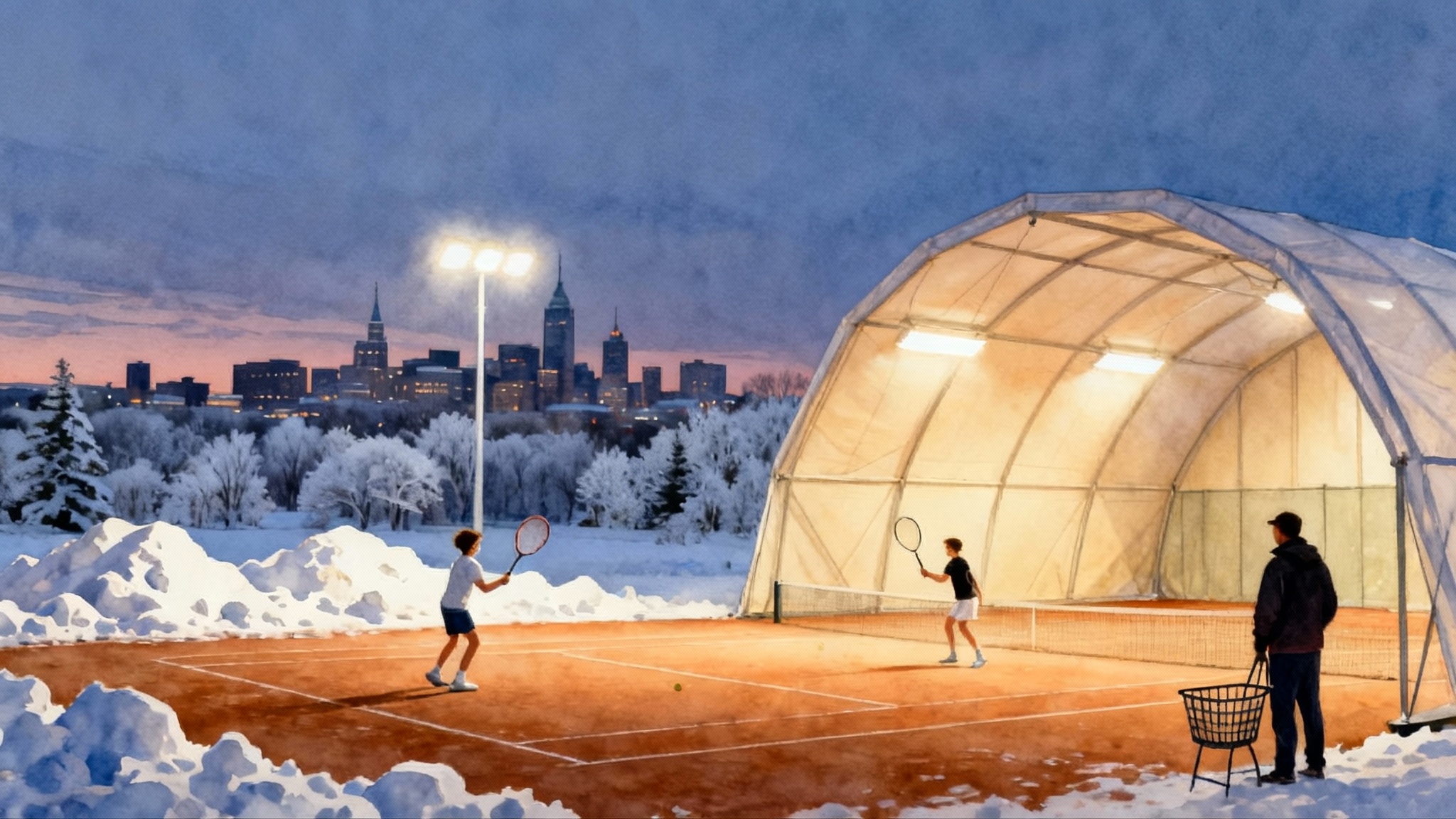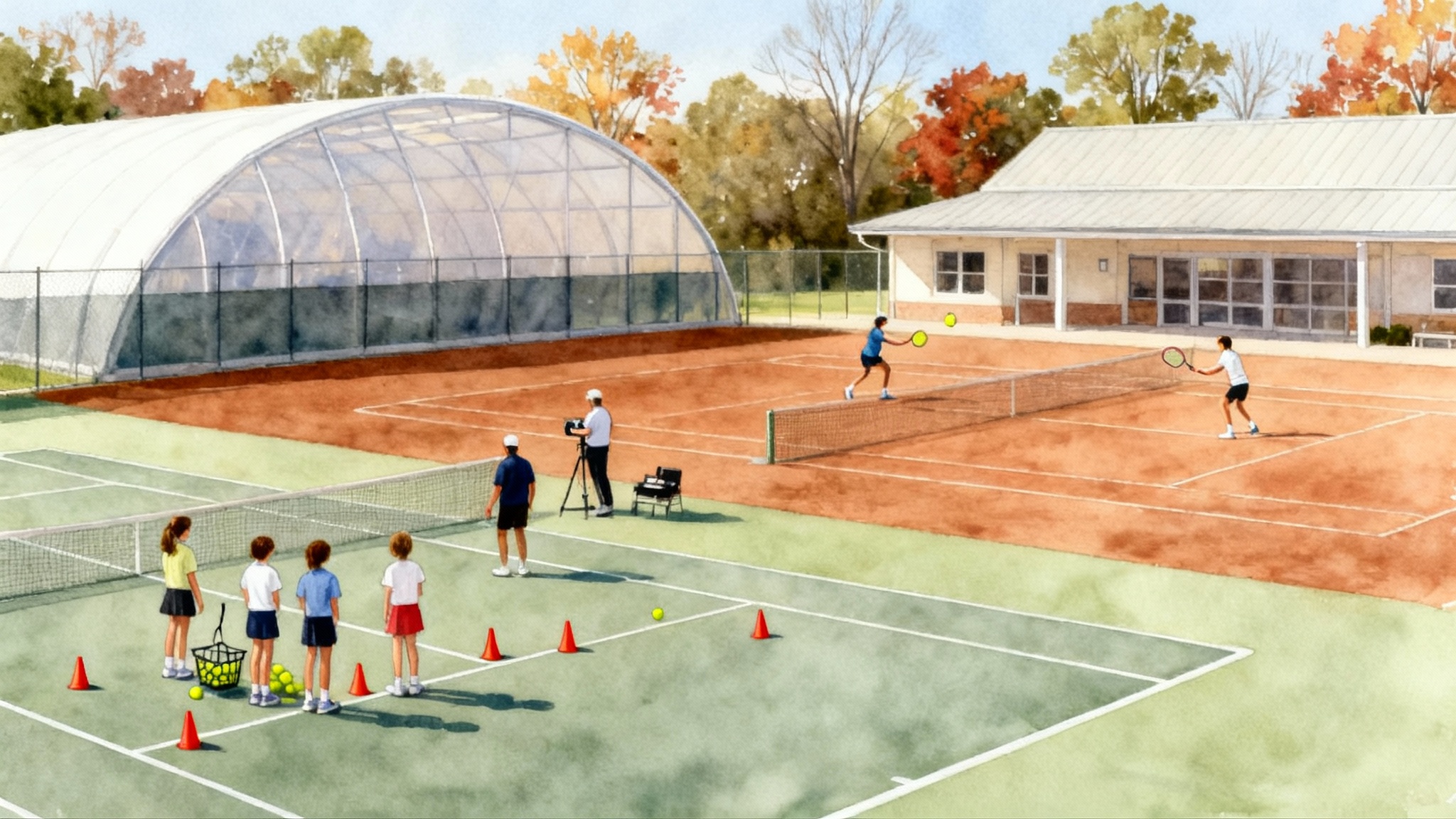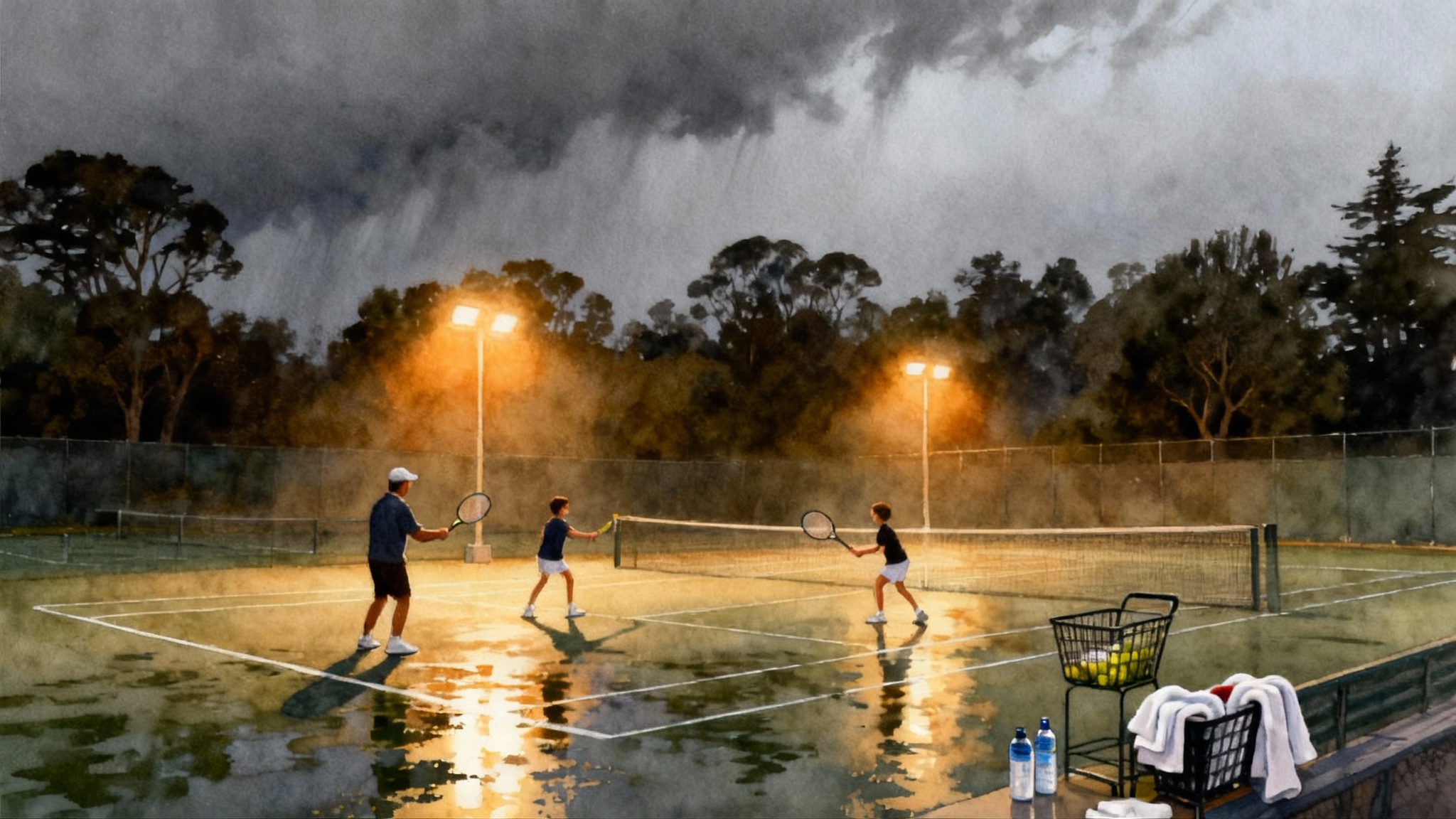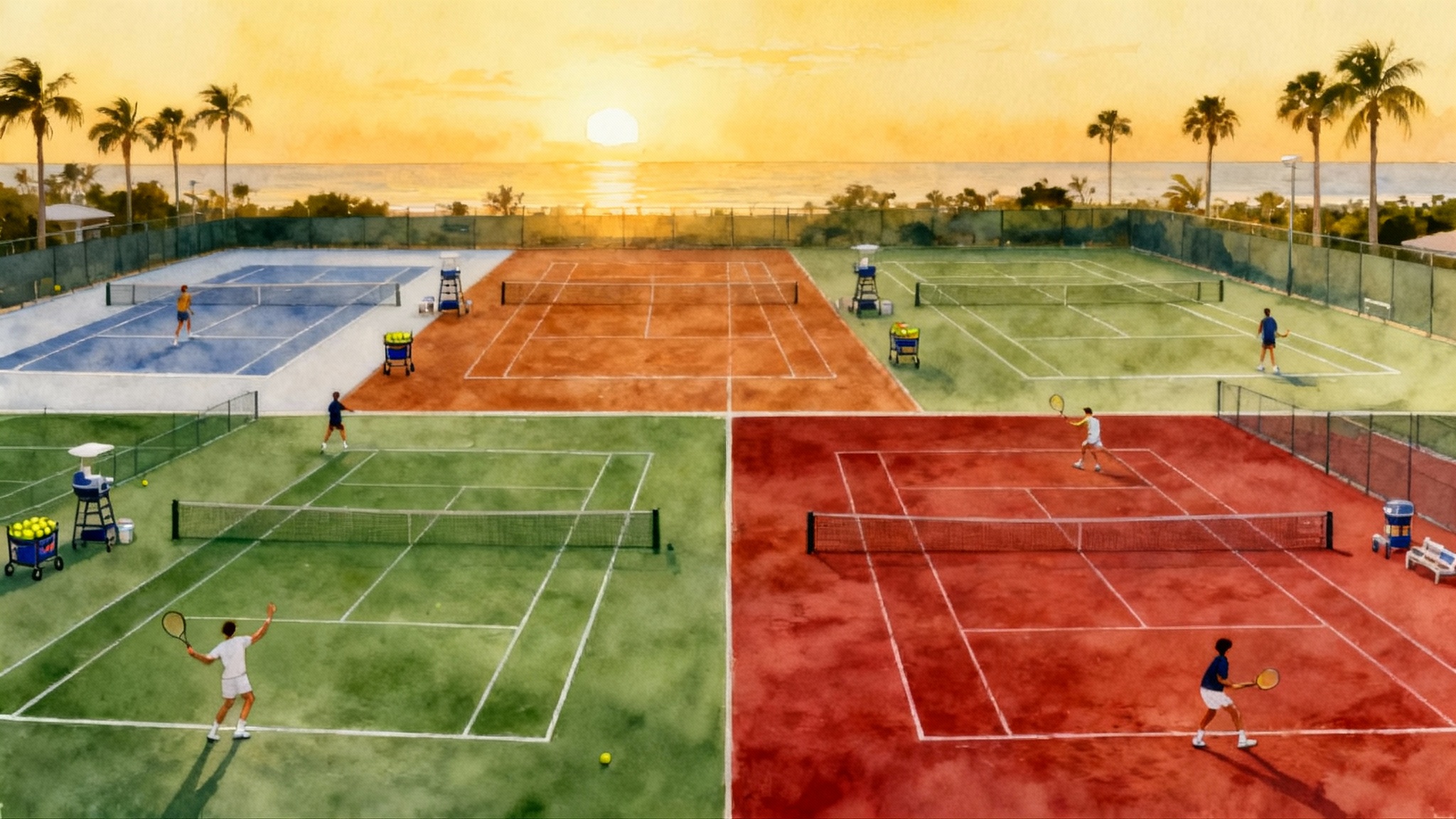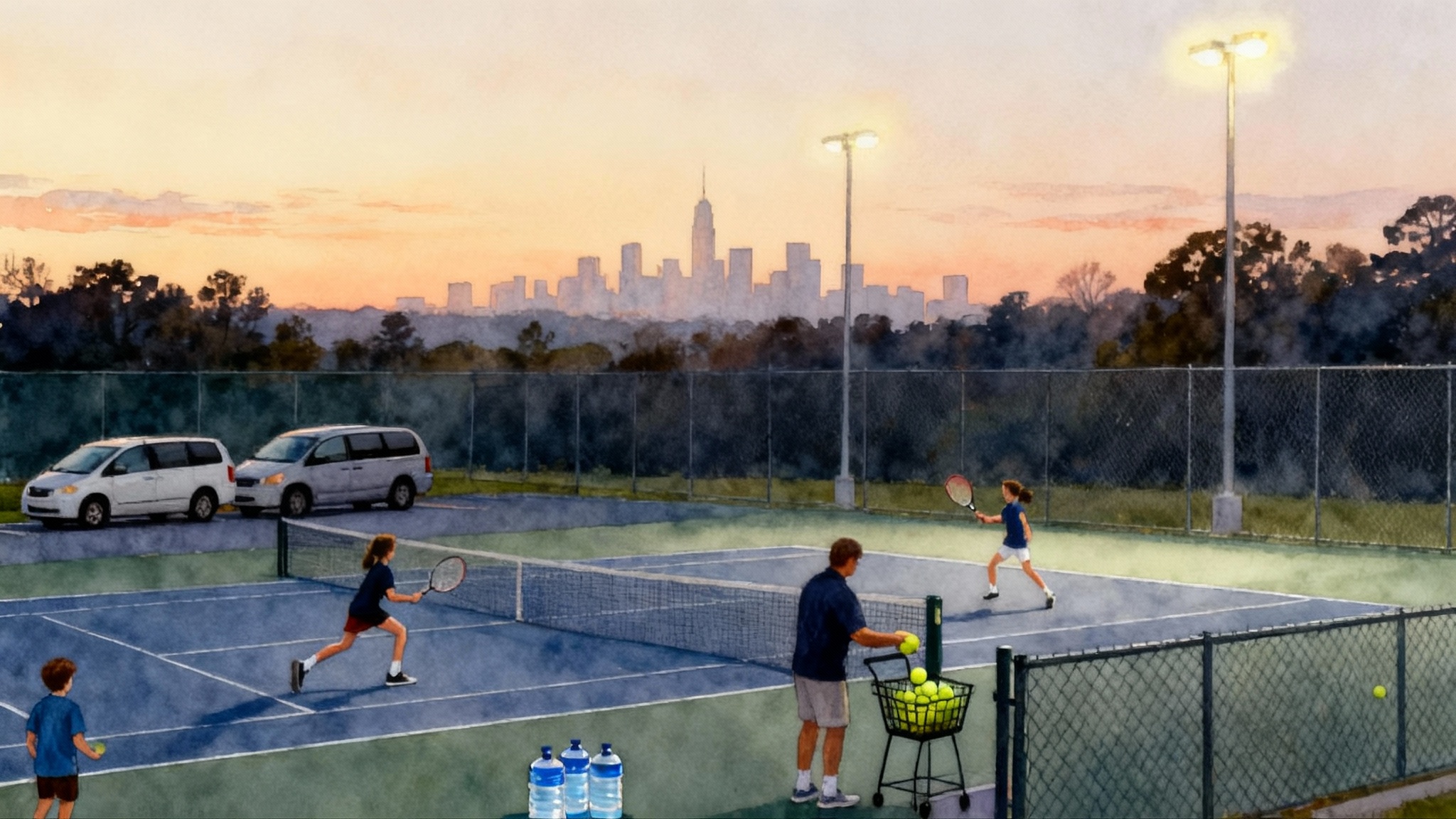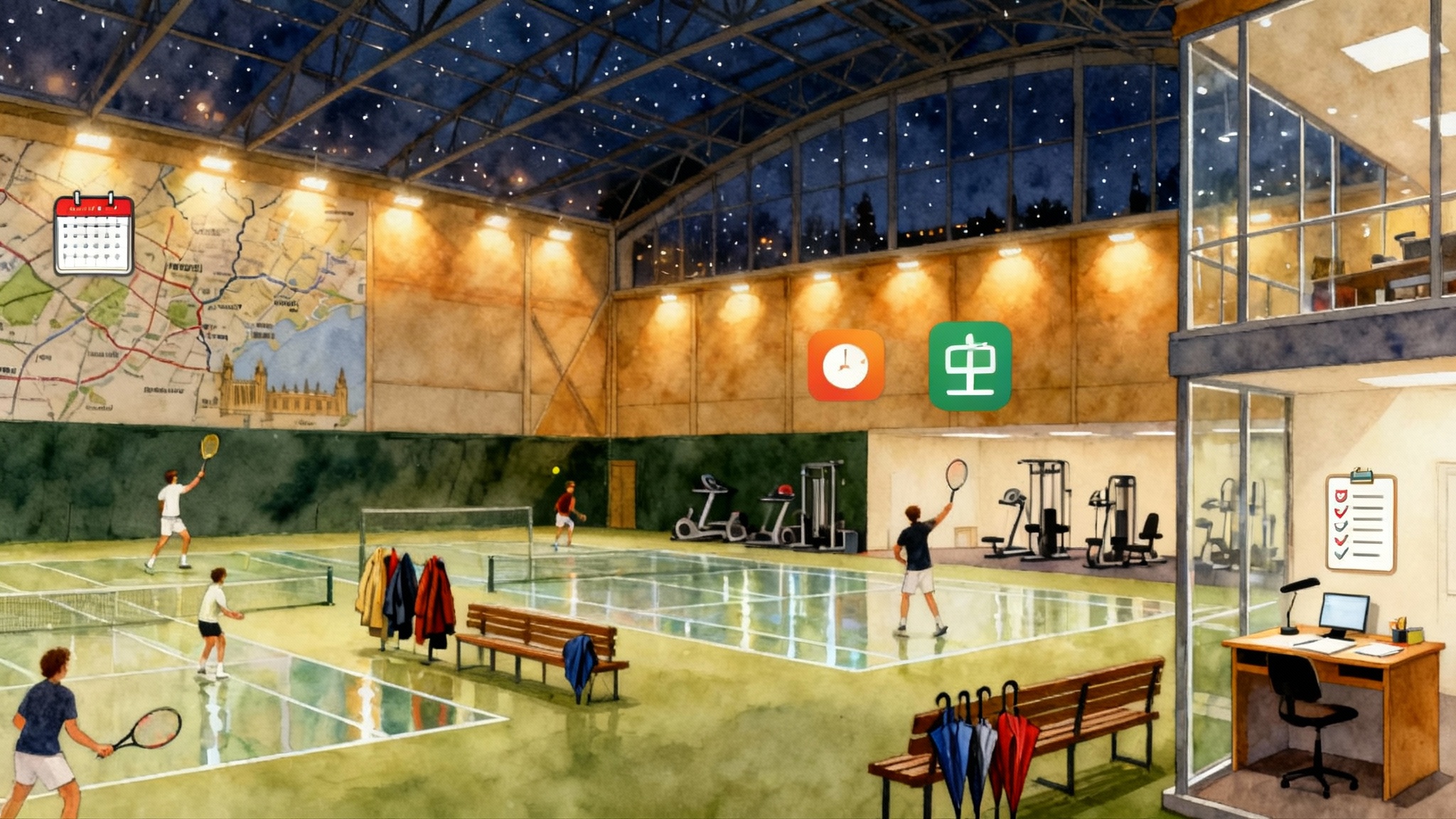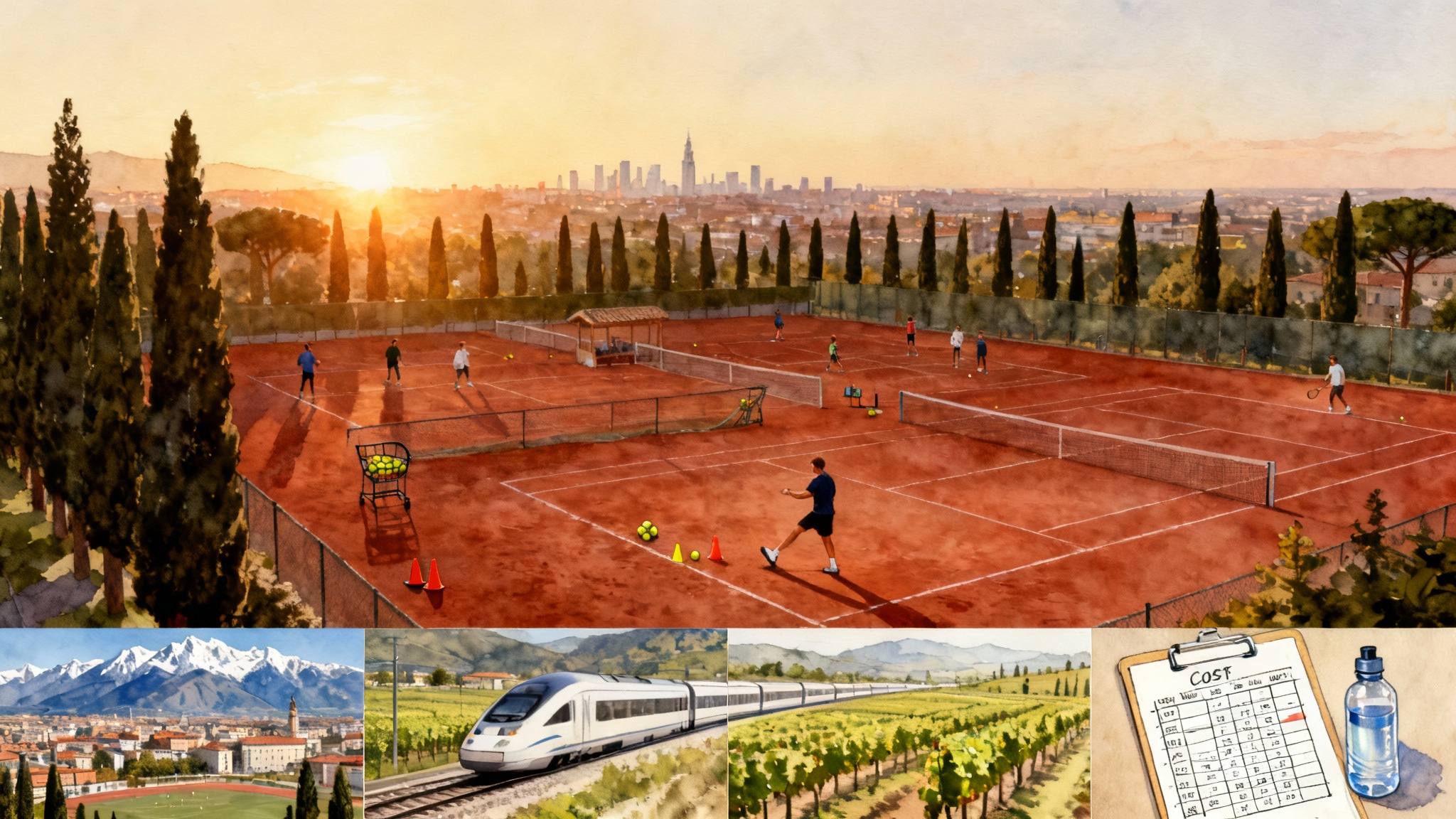Spain Tennis Academies 2025–2026: Barcelona, Valencia, Mallorca
A practical, family-first guide to Spain’s leading clay-focused academies. Compare training models, boarding and schooling, costs, language support, climate, travel, and outcomes, with Valencia Tennis Academy as a flexible, non-boarding option.
Why Spain still sets the clay-court standard
If your player thrives on long rallies, point construction and footwork that turns defense into offense, Spain remains the most reliable classroom. The country’s red clay culture builds habits that last: patient shot selection, balanced movement and the endurance to win tight matches in humid conditions. In 2025–2026, three hubs stand out for families weighing quality, cost and lifestyle: Barcelona, Valencia and Mallorca.
If you are also weighing other regions, compare our Italy tennis academies 2025–2026 and UK tennis academies 2025–2026.
This guide is written for parents who want specifics, not slogans. We compare training models, boarding and schooling options, cost ranges, language support, likely outcomes (college versus professional), climate, travel logistics and sample weekly schedules. We also explain how to use the World Tennis Number and Universal Tennis Rating to evaluate fit and track progress.
How to compare academies like a pro parent
Families usually choose on emotion first and then try to justify the decision. Reverse that. Use these five lenses and you will save money, stress and time on court.
- Training model
- Full-time: Year-round daily tennis and fitness plus schooling support. Best for players targeting college recruitment or early professional steps. Typical load is 18 to 24 on-court hours per week plus 6 to 10 hours of fitness.
- After-school: Local or short-stay families who want quality reps without switching schools. Expect 8 to 12 on-court hours per week plus 2 to 4 hours of fitness.
- Holiday camps: One to six weeks, often with tournament add-ons. Good for testing a program before committing.
- Boarding and schooling
- Boarding reduces commute friction and enforces habits, but it increases cost. Most boarding programs integrate accredited schooling or partner with online providers. Day students rely on local schools or homeschooling.
- Cost ranges you can budget
- Full-time boarding packages: roughly 3,000 to 5,500 euros per month, depending on room type, school package and private lesson add-ons.
- Full-time day programs: roughly 1,100 to 2,200 euros per month.
- After-school: roughly 400 to 900 euros per month.
- Camps: roughly 700 to 1,200 euros per week.
- Extras to expect: tournament entries 60 to 120 euros each, private lessons 60 to 120 euros per hour, physio 40 to 90 euros per session, stringing 15 to 30 euros per racquet, transport 20 to 80 euros per trip.
- Language support
- Major centers can deliver coaching in English and Spanish. Look for classroom or tutoring support in English if your player will study. Ask for the ratio of English-speaking tutors to students, and whether coaches run correction in the player’s first language during key technical phases.
- Outcomes: college versus pro
- Ask for three years of placement data, not a greatest-hits brochure. Good academies can show recent placements into United States college programs (NCAA Division I and Division II, including ITA top-50 teams). Professional pathways usually begin with national events and transition to ITF and ATP or WTA points; very few players jump levels without a long runway.
Barcelona: big-city depth with structured boarding
Barcelona’s tennis scene blends tradition and volume. You get deep player pools for sparring, experienced fitness staff and a calendar full of local matches within a one-hour drive.
Climate and training windows
- Mild winters and hot summers. January sees daytime highs near 14 degrees Celsius; July and August reach the high 20s to low 30s with humidity. Clay plays heavier in winter mornings and livelier in spring.
Travel logistics
- Fly into Barcelona–El Prat Airport. Most academies sit on the city’s outskirts or in nearby towns. Public transport is solid, but rush-hour traffic can stretch a 25-minute drive to 45 minutes.
Training models and fit
- Barcelona is strongest for families who want boarding plus school support, or for older teens who need matchplay volume at a consistent level. Day students must plan for traffic and train schedules.
Cost and services
- Expect prices near the higher end of Spain’s range due to housing and staffing costs. Boarding often includes nutrition planning, physio access and tournament logistics. If you are cost sensitive, request a day-student quote with a capped private-lesson plan.
Language support
- English is widely used in coaching and classrooms. Younger players do well in mixed groups that alternate English and Spanish for quick corrections.
Outcome patterns
- Barcelona programs often place players into strong United States college teams and European universities while a handful move into ITF and lower-tier ATP and WTA events. The large local ladder means you can test levels weekly.
Valencia: flexible training with a Mediterranean pace
Families who value sunshine, manageable costs and city convenience should look closely at Valencia. The coast delivers long dry spells, and the city is compact enough for efficient commuting.
Climate and training windows
- Winters are gentler than Barcelona with more sunny days. Summer is hot but breezy. Clay dries quickly after showers, so cancellations are rare.
Travel logistics
- Fly into Valencia Airport and ride the metro or a short taxi to most neighborhoods. The ring-road keeps commute times predictable.
Featured option: Valencia Tennis Academy
- Valencia Tennis Academy stands out as a flexible, non-boarding choice for families who want quality coaching without moving into a residence. Commuter-friendly schedules let local and visiting players combine school with serious training. Parents often rent apartments for one to six months and treat the city like a home base.
Training model and structure
- After-school tracks focus on 90 to 120 minutes of on-court work plus 30 to 45 minutes of fitness, three to five days per week. Short-term full-time blocks are available for players on school breaks who want morning and afternoon sessions.
Cost and add-ons
- As a non-boarding path, total costs skew lower. Families pay for training blocks, private lessons when needed and local tournament days. Budget a rental bike or metro pass and you will still come in well under boarding programs.
Language support
- Coaching runs in English and Spanish; younger players get quick-switch corrections. School support happens through your existing school or online platform, which avoids complex transfers.
Outcome patterns
- Committed after-school players in Valencia often combine a local competition calendar with periodic trips to Barcelona or Alicante for stronger matchplay. The model suits college-bound athletes who value balance and consistent reps.
Note on the broader region
- The Valencian Community also includes well-known residential academies inland. If you want boarding plus a quiet training bubble, those are worth comparing. If you want city life with a shorter commute, Valencia city and Valencia Tennis Academy are hard to beat.
Mallorca: destination training with a performance bubble
Mallorca offers a purpose-built, high-structure environment anchored by top-tier facilities. Think consistent routines, on-site schooling and an island rhythm that keeps distractions low.
Climate and training windows
- Winters are mild with occasional wind. Spring and autumn are excellent for clay. Summer heat is manageable with early sessions and indoor fitness.
Travel logistics
- Fly into Palma de Mallorca Airport. Most families board on site to avoid daily transfers. Non-boarding is possible but requires a car and strict planning around ferry or flight schedules if you leave the island often.
Training models and fit
- Best for full-time boarders and serious camp blocks. Weekly schedules are intense, with monitored recovery and supervised study hall.
Cost and services
- Expect pricing at the top of Spain’s range due to facilities, staffing and boarding demand. In return you get on-site school integration, sports science access and frequent matchplay.
Outcome patterns
- Strong placement into competitive college programs and a visible pathway into ITF events hosted regionally. Ideal for players who thrive in structured environments.
How to use WTN and UTR to judge fit
Two global scales help you pick the right training and competition level: the International Tennis Federation’s World Tennis Number and Universal Tennis Rating. Start by understanding what each number means and ask every academy how they group players in both scales.
- World Tennis Number: lower is better, and it is designed to support global, age-agnostic match comparison. Read the official World Tennis Number.
- Universal Tennis Rating: higher is better, and it is widely used by United States colleges and many academies to group practice and matches. See the Universal Tennis UTR guide.
Practical steps for families
- Ask for a typical daily matchplay group range in both systems. Example: UTR 8.5 to 10.0 or WTN 24 to 18.
- Verify how often your player faces opponents within the ideal challenge band: about 40 to 60 percent of matches should be against slightly stronger players, 20 to 40 percent at a similar level and the rest against weaker players to build confidence and test patterns.
- Request two weeks of sample draws or coach notes that show groupings by UTR and WTN. If an academy cannot supply this, expect inconsistent matchplay.
- Track changes monthly. A healthy training block will show small, steady rating movement plus better competitive quality, not just a lucky jump.
Sample weekly schedules you can copy
Full-time boarding template
- Monday to Friday:
- 07:00 Wake, mobility, breakfast
- 08:00 Study block or classes
- 10:00 On-court drills and patterns
- 12:00 Lunch, recovery, sports therapy
- 14:00 Fitness: strength and movement
- 15:00 On-court situational play and sets
- 17:00 Video review or sports psychology
- 18:00 Study hall, dinner, lights out routine
- Saturday: Matchplay ladder or tournament travel
- Sunday: Active recovery and planning
After-school commuter template
- Monday, Wednesday, Friday:
- 15:30 Arrival and warm-up
- 15:45 Technical footwork and drilling
- 16:45 Supervised points and sets
- 17:45 Fitness circuit and mobility
- Tuesday, Thursday: Optional private lesson or study
- Weekend: Local tournament or two-hour match block
Holiday camp template
- Five days:
- Morning: Movement screen, forehand and serve themes, competitive games
- Afternoon: Live ball, tactical patterns, fitness test, recovery workshop
- One tournament day: Coaches observe and debrief using UTR and WTN notes
Costs and what drives them
Why prices vary
- Coaching staff depth: senior coaches and sports science teams cost more but save time by preventing injury and technical backtracking.
- Player pool depth: a rich ladder reduces the need for paid sparring.
- Housing and schooling: boarding rooms, meals and accredited classrooms add significantly to monthly fees.
- Tournaments and transport: islands and remote locations require flights; cities can use trains or vans.
How to reduce costs without losing quality
- Choose a day-student plan with a fixed number of private lessons per month and a guaranteed matchplay slot.
- Share private lessons in two-player formats when working on patterns rather than detailed biomechanics.
- Use local tournaments for early rounds and save travel for events where the draw quality justifies the spend.
- Negotiate a commitment discount for three to six months if you are confident in the fit.
Language and schooling support
- Coaching language: ask where key corrections occur. For example, technical rebuilds should be in the player’s strongest language early in the process.
- Academics: confirm accreditation if using on-site schooling, or verify time-zone friendly tutors if you keep an online school. Look for supervised study halls, not just a quiet room with Wi‑Fi.
- Parent communication: ensure you receive weekly feedback with video or written notes tied to UTR and WTN targets.
College versus pro: choosing the right path now
College pathway
- Target: players whose UTR and WTN show steady progress and who want a degree. The recruiting cycle begins early in Secondary Three or Ninth Grade. Build a highlight reel, collect match video with score overlays and schedule visits. Academies with strong college counseling can show recent placements and coach contacts.
Professional pathway
- Target: players with exceptional competitive metrics by late teens, resilient health records and support for travel costs. A credible plan includes national events, then ITF transition tournaments, sports psychology and a strength program that can handle back-to-back weeks.
Hybrid approach
- Many families treat college as Plan A with a pro test during gap months. The key is transferable development: heavy topspin on clay, patterns that translate to hard courts and serve plus forehand combinations that win short points when needed.
Decision checklist for families
- Rank regions by climate tolerance: does your player perform better in humid heat or cooler mornings?
- Decide boarding versus city life: discipline from structure or maturity from independence.
- Map commute: door-to-court travel under 35 minutes saves energy.
- Demand grouping data: UTR and WTN bands for daily sessions and matches.
- Confirm academic plan: accredited school or defined online schedule with supervised blocks.
- Fix your budget: set a monthly ceiling and pre-approve extras like privates and transport.
- Test before committing: book a one or two-week trial with two tournament days.
Quick regional snapshot
Barcelona
- Strengths: deep player pool, structured boarding, frequent competition.
- Watchouts: higher costs, commuting if not boarding.
Valencia
- Strengths: sunny climate, predictable commutes, strong non-boarding options like Valencia Tennis Academy.
- Watchouts: you may need occasional trips to denser ladders for diversity in matchplay.
Mallorca
- Strengths: high structure, integrated services, low distraction.
- Watchouts: higher cost and travel complexity for off-island tournaments.
Why Valencia Tennis Academy is worth a serious look
If your family wants Mediterranean city life, flexible schedules and a budget that prioritizes court time over residence fees, Valencia Tennis Academy is a smart shortlist pick. The non-boarding setup keeps costs lean. The coaching model supports after-school consistency and full-time bursts during breaks. English and Spanish coaching ensures quick corrections without confusion, and the city’s compact layout means more time training and less time commuting. For college-bound athletes and younger teens still growing into higher UTR and WTN bands, this balance often beats a full relocation.
Final take
Choose the environment that protects training quality every day. That is usually the place with the most appropriate matchplay, a commute your family can sustain and a budget that still leaves room for tournaments, private lessons and recovery. Barcelona offers depth and structure, Mallorca delivers a concentrated performance bubble and Valencia provides flexible, city-based efficiency with Valencia Tennis Academy as a standout non-boarding option. Pick one, test it for two weeks, measure progress with World Tennis Number and Universal Tennis Rating, and then commit with confidence. The result you are buying is not a brochure line. It is steady, compounding improvement that shows up on the scoreboard.
